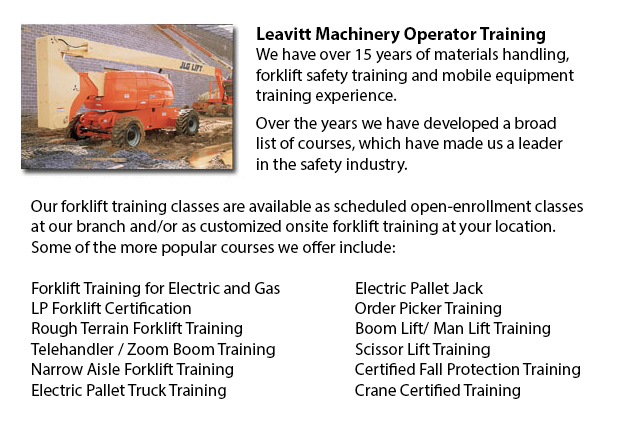
Boom Lift Safey Training Moose Jaw - Boom lifts fall under the category of aerial lifting device or elevated work platform. Most commonly utilized in warehousing, construction and industry; the boom lift is very versatile that it could be utilized in almost whichever setting.
The elevated work platform is utilized to be able to allow access to heights that were otherwise inaccessible utilizing other methods. There are dangers inherent when utilizing a boom lift device. Employees who operate them need to be trained in the proper operating methods. Preventing accidents is vital.
The safety aspects which are involved in using boom lifts are included in our Boom Lift Training Programs. The course is best for people who operate self-propelled elevated work platforms and self-propelled boom supported elevated work platforms. Upon successful completion of the course, Individuals who participated would be issued a certificate by an individual who is authorized to confirm finishing a hands-on assessment.
Industry agencies, local and federal regulators, and lift manufacturers all play a part in establishing standards and providing information in order to help train operators in the safe utilization of elevated work platforms. The most essential ways to avoid accidents connected to the use of elevated work platforms are the following: having on safety gear, performing site assessment and inspecting machinery.
Vital safety considerations when operating Boom lifts:
Operators must observe the minimum safe approach distance (or also called MSAD) from power lines. Voltage can arc across the air to find an easy path to ground.
A telescopic boom must be retracted prior to lowering a work platform so as to maintain stability when the platform nears the ground.
Boom lift workers should tie off to ensure their safety. The harness and lanyard tools must be attached to manufacturer provided anchorage, and never to other poles or wires. Tying off may or may not be required in scissor lifts, that depends on specific local rules, employer guidelines or job risks.
Avoid working on a slope that goes beyond the maximum slope rating as specified by the manufacturer. If the slop exceeds requirements, then the machine must be transported or winched over the slope. A grade could be easily measured by laying a straight edge or board of at least 3 feet on the slope. Afterward a carpenter's level can be laid on the straight edge and the end raised until it is level. The percent slope is attained by measuring the distance to the ground (the rise) and dividing the rise by the length of the straight edge. Afterward multiply by one hundred.
-
Telehandler Training Courses Moose Jaw
Telehandler Training Courses Moose Jaw - Employers are responsible for making sure that their supervisory and operating personnel are trained to work competently making use of telehandler equipment. The competence level of workers need to be assessed... More -
Boom Lift Ticket Moose Jaw
Boom Lift Ticket Moose Jaw - Boom Lifts are a platform lift piece of equipment that could be lifted or lowered to differing heights, making this device a helpful instrument for certain industrial functions. There are some unique types of Boom Lift co... More -
Operator Safety Training, Re-Qualification Training, In-House Instructor Training in Moose Jaw
Utilized in nearly all industrial construction sites, warehouse operations or boat yards, the lift truck is a very important part in order to help lift and transport goods. The reach feature of a lift truck can help better the applications that the l... More -
Heavy Equipment Training Schools Moose Jaw
Heavy Equipment Training Schools Moose Jaw - There are many heavy equipment training schools to choose from. If you want to get to the best, it is important to examine several factors of the school in order to determine the level of education you wil... More -
Counterbalance Forklift Training Moose Jaw
Counterbalance Forklift Training Moose Jaw - Demand is always high for our popular Counterbalance Forklift Truck Training courses. A Counterbalance forklift refers to a forklift along with a weight that counters the balance, enabling the load's weigh... More -
Forklift Training Program Moose Jaw
Forklift Training Program Moose Jaw - Lift trucks are occasionally referred to as jitneys, hi los or lift trucks. These powered industrial trucks are utilized widely today. Department stores used forklifts in order to unload merchandise from trailers... More -
Forklift Ticket Moose Jaw
Forklift Ticket Moose Jaw - Pallet jacks and forklifts are both intended for practically the same reason; to transfer goods from a place of your warehouse to another. This is basically where the comparison stops however. With the pallet jack, the ben... More -
Forklift Operator Certification Moose Jaw
Forklift Operator Certification Moose Jaw - Forklift operator certification is normally needed for employees working in construction, warehouse or industrial setting to guarantee the safe operation of forklifts. Workplace training has to follow a met... More

Forklift Training Moose Jaw
TOLL FREE: 1-888-254-6157
Moose Jaw, Saskatchewan
forklifttrainingmoosejaw.com
Email Us
About Us


